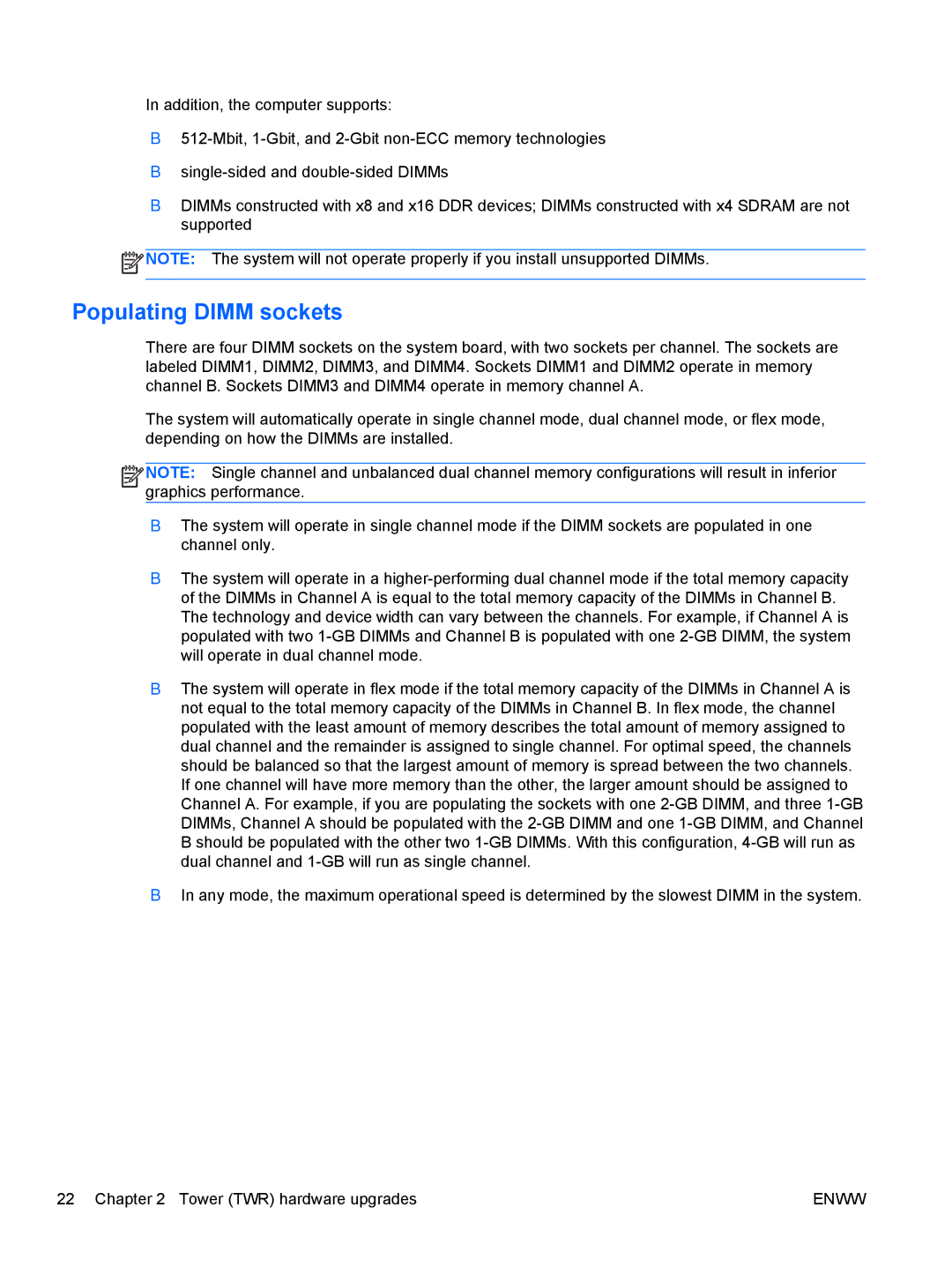
In addition, the computer supports:
●
●
●DIMMs constructed with x8 and x16 DDR devices; DIMMs constructed with x4 SDRAM are not supported
![]() NOTE: The system will not operate properly if you install unsupported DIMMs.
NOTE: The system will not operate properly if you install unsupported DIMMs.
Populating DIMM sockets
There are four DIMM sockets on the system board, with two sockets per channel. The sockets are labeled DIMM1, DIMM2, DIMM3, and DIMM4. Sockets DIMM1 and DIMM2 operate in memory channel B. Sockets DIMM3 and DIMM4 operate in memory channel A.
The system will automatically operate in single channel mode, dual channel mode, or flex mode, depending on how the DIMMs are installed.
![]()
![]()
![]()
![]() NOTE: Single channel and unbalanced dual channel memory configurations will result in inferior graphics performance.
NOTE: Single channel and unbalanced dual channel memory configurations will result in inferior graphics performance.
●The system will operate in single channel mode if the DIMM sockets are populated in one channel only.
●The system will operate in a
●The system will operate in flex mode if the total memory capacity of the DIMMs in Channel A is not equal to the total memory capacity of the DIMMs in Channel B. In flex mode, the channel populated with the least amount of memory describes the total amount of memory assigned to dual channel and the remainder is assigned to single channel. For optimal speed, the channels should be balanced so that the largest amount of memory is spread between the two channels. If one channel will have more memory than the other, the larger amount should be assigned to Channel A. For example, if you are populating the sockets with one
●In any mode, the maximum operational speed is determined by the slowest DIMM in the system.
22 Chapter 2 Tower (TWR) hardware upgrades | ENWW |
